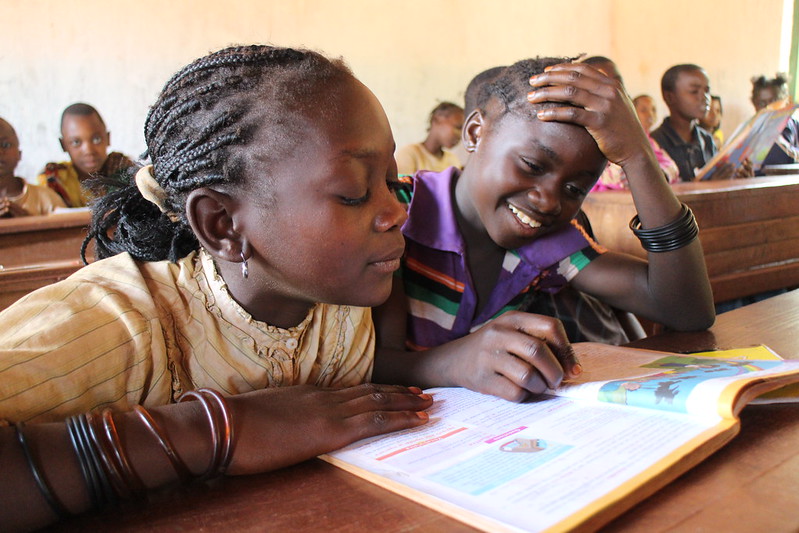Advocacy
The narrative around VIS can be fragmented, given that it is “owned” by different sectors and spaces. There was agreement on the importance of concise language and shared terminology that all actors in different sectoral spaces can recognise, but that different “arguments” and cases work for different audiences.
- More powerful language is required to cut through at a political level, and enable Ministers of Education to make an investment case. Ideas discussed included:
- Exploring links between violence prevention and foundational learning as messaging that could garner broader support.
- Highlighting the importance of socio emotional skills as a key foundational skill, alongside literacy and numeracy.
This year was agreed to be a strategic year to coordinate more advocacy and campaign efforts, to mobilise political action, including at the following events: AU Year of Education, Education World Forum, G20 and G20 Education Ministerial and Global Education Meeting being run by UNESCO, leading into the Ministerial on Violence Against Children in Colombia.
States and political champions
There was a focus on the powerful role of states championing what is working within regional and global forums (for example, through the African Union and ASEAN; and the G7 and G20.)
There was intent and energy for the institutions present to come together behind a joint mechanism or process for governments to signal commitment to the issue, such as the revamped Safe to Learn Call to Action.
A ‘big five’ leaders committee or commission on this agenda was also discussed. These political champions could represent different contexts, and both collectively and individually elevate the issue on the high-level political agenda.
“It takes the whole global village to support and protect the whole potential of every child”
There was alignment across multiple partners to put support behind the global initiative to end corporal punishment (hosted by WHO), so that we track progress in the 64 countries that have not banned Corporal Punishment.
In terms of driving stronger buy-in domestically, states could explore a VIS strategy and policy unit to be led out of a Presidential unit or Prime Minister’s office to elevate and enable buy-in from different ministries.
In some breakout sessions, the following regional policy mechanisms were highlighted as interesting examples:
- West and Central Africa Commitment for Educated, Health and Thriving Adolescents and Young People (2023) endorsed by Ministers of Health and Education from twenty three governments
- African Union Continental Strategy on Education for Health and Well-being (2023) – with one of four pillars being on safe and inclusive learning environments.
-
Government of Indonesia case study:
A robust policy framework enabled by political willIn the past four years, the government has embarked on a radical education transformation called the “Emancipated Learning” movement which promotes a new paradigm where schooling is a joyful experience in which students are empowered with the agency to learn and explore. Furthermore, teachers are trained based on practice and empowered to co-create the curriculum with the principal as the instructional leader. To ensure “Emancipated Learning” implementation, having safe schools is a must. Students cannot learn optimally, and teachers cannot facilitate learning effectively if the environment isn’t safe and supportive.
Indonesia’s first policy addressing school violence was a Ministerial Regulation in 2015. The regulation set the foundation for building the system to prevent, respond, and penalise violence in school environments. It also mandates local governments and schools to make prevention programmes and establish an ad hoc response team if school violence occurs.
Indonesia enacting the new Ministerial Regulation for Prevention and Respond Sexual Violence in Tertiary Education in 2021. Tertiary Education was not covered by the regulation in 2015, thus it became our priority. The regulation mandates that each university establishes a permanent task force to create preventive programs and to respond if a case is found. When this regulation took effect, there was an uproar. Many universities, professors, public figures, even students were reluctant, complained, and refused the mandates. The government saw the wave after wave of protest, but stood firm to fight for the cause. They developed a comprehensive awareness campaign, based on data, engaged directly with multiple stakeholders, and over time the efforts were successful.
The successful momentum of their policy in 2021 led to the creation of new National Law in 2022 on Sexual Violence Crime. In 2023, it was time to update and improve the 2015 regulations by creating new ministerial regulations that work as a guideline and broaden the scope of protection that is not only functioning at school but also outside school if it involves students. It also addresses school violence in many forms—physical, sexual, and including physical and digital materials, online or offline.These policies have laid the groundwork to enable changes at a system and school level. The government continues to approach ending school violence in a four-pronged approach:
We build the momentum for law creation. We raise support for the mandate. We pilot programs to find the best practices. We engage with all stakeholders through many opportunities.
